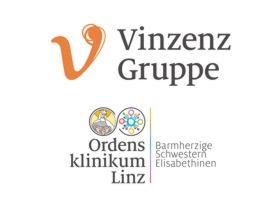EANM 2010—Welcome to Vienna!Tools Langsteger, Werner (2010) EANM 2010—Welcome to Vienna! European Journal of Nuclear Medicine, 37 (Suppl2). S183-S184. 3 - 2010 EJNMMI Langsteger Editorial.pdf Restricted to Nur registrierte Benutzer Download (55kB) KurzfassungOn behalf of the European Association of Nuclear
Medicine, I am very honoured and pleased to welcome
you to Vienna for the 23rd Annual EANM Congress, 2010.
Following the congresses in 1991 and 2002, this is the third
time that Vienna has had the privilege of hosting the annual
congress. Together with the Austrian Nuclear Medicine
Society, we have organised an attractive programme for
both physicians and scientists. Our congress location, the
Austria Center Vienna, is located between the tower blocks
of the Donau City district and the Vienna International
Centre (UN), in the most modern part of Vienna. It is easily
reached by almost all forms of transport.
Vienna is one of the oldest university cities in Europe and
has always been a city of historical and scientific importance.
It was the centre of the Habsburg hegemony, which began in
1282 and endured for more than 630 years, until the end of the
First World War in 1918. During that time many different
nationalities with a population numbering as many as 56
million lived under the one crown within a global empire that
stretched from Central Europe to South America.
The Habsburgs had their final summer residence at the
famous Schönbrunn Palace, the first recorded mention of
which dates back to 1642. The whole ensemble, including
the palace, the park with its numerous architectural features,
fountains and statues, and the zoo—the oldest of its kind in
the world—was placed on the UNESCO World Cultural
Heritage List in December 1996.
TheMedical University ofVienna has centuries of tradition
and experience. Indeed, the medical faculty was already
renowned as an authority in medicine during medieval times,
with records from as long ago as 1399. Viennese medicine
first attained international significance during the reign of
Maria Theresia. Famous physicians such as Gerard van
Swieten, Leopold Auenbrugger and representatives of the
“Second Viennese Medical School”, including Karl Rokitansky
and Ignaz Philipp Semmelweis, paved the way for other
leading figures. By the beginning of the 20th century,
Viennese medicine was recognised as being of the highest
class internationally, as reflected by the award of four Nobel
Prizes (Bárány 1914, Wagner-Jauregg 1927, Landsteiner
1930, Loewi 1936) during the subsequent decades.
Vienna is one of the most important European capitals.
Owing to its geographical location at the meeting point of
three cultures, Vienna has been at the heart of the most
significant developments in European history. As the third
UN city after Geneva and New York, and as a centre of
cultural interaction, Vienna has become a well-established
link between the former Eastern and Western Europe.
Moreover, it is playing an important role in a still
expanding European Union.
For centuries the Habsburg dynasty attracted some of the
world’s most prominent artists to its court in Vienna.
Famous composers such as Strauss, Mozart, Beethoven and
Schubert have helped to make Vienna the musical capital of
the world. Today, Vienna continues to have a multifaceted
cultural life, offering a choice of 70 theatres, 4 opera
houses, 2 stages for musicals and about 100 museums,
ranging from the Egon Schiele collection in the Museumsquartier
to Schönbrunn Palace.
In both 2009 and 2010, following improvements in
Austria’s political and social environment, the well-known
Mercer survey of 221 international cities from across the
globe chose Austria’s capital as the safest city with the best
quality of life. Likewise, The New York Times selected
Vienna as one of the 44 Places to Go in 2009.
Actions (login required) |
||||||||||||||
|


 Tools
Tools Tools
Tools